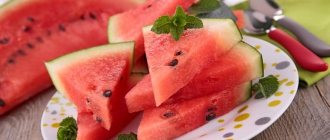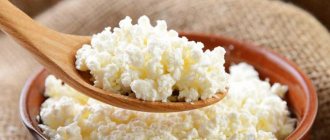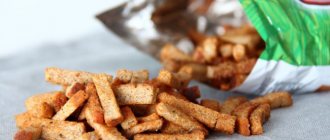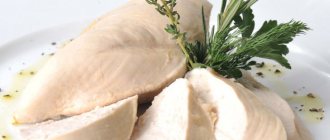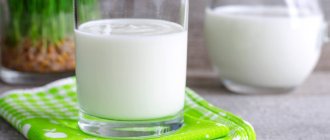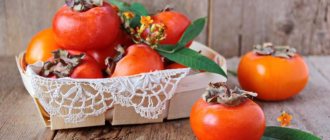Diet for breastfeeding
There is an opinion that many foods should be avoided when breastfeeding. Sometimes, after friends tell you that after giving birth you will have to eat only buckwheat, and that pork is contraindicated during breastfeeding, the expectant mother panics and refuses to breastfeed her baby. But such an opinion does not have sufficient basis. A nursing mother must adhere to the following rules:
- Limit your diet for 1 month after giving birth. The child is very small, and it is not clear whether he suffers from allergic diseases or not. Therefore, during the neonatal period, preference should be given to hypoallergenic products.
- You can't stick to diets to lose weight. Such a diet will negatively affect the health of mother and baby. A deficiency of nutrients will affect the condition of hair, nails and skin.
- The volume of food should increase slightly. Just add a light evening snack.
- The basis is a varied diet without frills, food should be balanced.
- When introducing a new product, it is necessary to monitor the baby's reaction. If redness appears or the baby is naughty, you should discontinue the product for a while.
- Food must be high quality and natural.
Turkey in the diet of a nursing mother
Turkey is a dietary product - it is lean meat, rich in nutrients and protein.
Turkey is suitable for preparing a variety of dishes and goes well with vegetables and cereals. This type of meat is one of the low-allergenic products and is recommended for women during lactation. Turkey, as a dietary product containing a minimal amount of fat, is well absorbed by the body.
Turkey meat contains a lot of iron, calcium, phosphorus and other beneficial vitamins and microelements necessary for the health of a nursing mother and baby.
Is it possible to eat the meat of this bird while breastfeeding, when and how to introduce it into the diet, and what are the benefits of turkey meat?
Often, after giving birth, young mothers doubt whether it is worth introducing this or that product into their diet, how the baby’s body will react to it, and whether it will harm the child? Different types of meat also raise similar doubts.
Breastfeeding mothers are recommended to consume turkey due to the presence in its composition of the necessary protein, vitamins and microelements necessary for the growth and development of the baby.
Meat consumed during breastfeeding should be hypoallergenic and contain a minimum of fat.
Not everyone knows that turkey is the most useful type of poultry during breastfeeding and safer than chicken, which can cause an allergic reaction in the baby due to the addition of growth-stimulating substances to the chicken’s diet.
From what month?
Nutritionists recommend including turkey meat in your diet in the first month after childbirth.
In any form?
During breastfeeding, it is recommended to consume turkey meat:
- boiled;
- add cooked turkey to salads;
- steam;
- bake;
- make meatballs from minced meat;
- add poultry to soups.
Reference! Vegetables (boiled, stewed, fresh, salads) are best suited as a side dish for turkey. You should avoid eating cereals combined with meat, as they make digestion difficult.
- Turkey is rich in vitamins A, B and E, which help improve the condition of hair, skin and nails.
- Iron, the maximum of which is found in the thighs of the bird, increases hemoglobin levels, which is useful in case of postpartum anemia.
- Consumption of turkey helps to normalize sleep in case of insomnia.
Tryptophan, which is found in turkey meat, has a hypnotic effect. - Turkey meat should be consumed to normalize the functioning of the nervous system, which is important for postpartum depression.
It contains sodium, which is higher in turkey than in beef or veal. Sodium also helps increase the amount of plasma in the blood, as well as normalize metabolism.
All the beneficial substances contained in turkey meat are easily absorbed by babies. Turkey meat is well digested by infants, usually does not cause allergies, contains a minimal amount of fat and many useful substances, therefore it is one of the best meat products for starting complementary feeding.
Turkey meat can be introduced into complementary foods when the baby is 6 months old. It is especially recommended to do this as early as possible if the baby is predisposed to developing anemia or has an iron deficiency. Without need, it can be introduced into the diet starting from 7-8 months.
It is considered most favorable to introduce turkey after starting complementary feeding with vegetable puree. It is better to start giving your baby industrially produced mixtures, where turkey is combined with vegetables and cereals, no earlier than 8-9 months.
Attention! The healthiest methods for cooking turkey are stewing, boiling and steaming.
The cooking time for meat depends on the size of the piece of poultry. The optimal piece for complementary feeding is a palm-sized piece, 1 cm thick. Any remaining meat can be cut up in a similar manner, labeled and frozen. You can defrost meat only once.
The beginning of complementary feeding should begin with mixtures of turkey with vegetables or cereals (add 1-2 teaspoons of ready-made meat puree).
You can give your baby turkey puree diluted with breast milk, vegetable broth or just boiled water. No need to add salt.
When the baby has teeth and learns to chew (9-11 months), you can introduce meatballs and steamed cutlets into the diet.
Benefits for the baby
- Turkey meat contains a lot of calcium, which is well absorbed due to the moderate fat content of this type of bird. When calcium enters the baby's body through mother's milk, it helps the baby's normal bone growth.
- Potassium, selenium, phosphorus and other microelements, which turkey meat is rich in, ensure normal metabolism in the baby’s body.
- Turkey helps improve immunity due to the large amount of zinc it contains.
- If a child does not eat well, it is good to introduce turkey into the child’s diet, since the fiber contained in its meat improves appetite.
- Makes the heart and blood vessels work more actively.
- Normalizes sleep.
- Relieves spasms and normalizes the functioning of the digestive system.
- Easily digestible protein helps the easy formation of organs and tissues of the growing body.
- Chromium, which turkey meat is rich in, is involved in the normalization of the thyroid gland, tissue restoration, and also in the regulation of carbohydrate metabolism.
Contraindications:
- If the mother or child has an allergy to animal protein, turkey meat should not be included in the diet of a nursing mother.
- Its consumption should be strictly limited in case of gout and kidney failure.
- When choosing turkey meat, you should pay attention to its skin: it should be elastic, smooth and dry to the touch. If the skin feels slippery to the touch, it means the bird has been lying on the counter for a long time. You can also check the freshness of the carcass by pressing on it with your finger - there should be no dents on the skin.
- There should be no stains or any damage on the carcass, and there should be no unpleasant odor.
- The comb should be light in color and the legs should be smooth, gray and rounded.
- When purchasing, you should not buy large carcasses, as they can be grown using growth stimulants.
One bird should weigh about 5-10 kg. - with such a mass, the meat will be the most tasty and healthy. The greater the mass of the bird, the older it is, its meat is tougher and drier. Turkey meat is more tender, but it contains less vitamins and other nutrients than the meat of adult birds. - High-quality turkey meat can be of different shades of red: from soft pink to dark red. Red meat contains less fat and more protein.
Important! During breastfeeding, it is necessary to monitor the freshness of meat.
Raw turkey carcass can be stored in the refrigerator for no more than one day.
When buying canned food for your baby, you need to pay attention to the expiration dates and make sure that the packaging is undamaged.
- Turkey must be thoroughly cooked; nursing mothers should not eat raw meat (undercooked steak, raw minced tartare, etc.).
- It is better to season poultry dishes with lemon juice or yogurt.
- It is not recommended to eat smoked turkey, fried in large amounts of oil, or to season turkey dishes with mayonnaise, ketchup and soy sauce.
- Cooked turkey should be stored in the refrigerator for no more than 12 hours so that its beneficial properties are not lost.
The introduction of turkey meat into the diet should be done gradually. First, when introducing it into the diet, you need to check how the child’s body will react to turkey. To do this, the mother can eat a small piece of boiled turkey or steam it. Since turkey skin contains substances that cause allergies, it is necessary to remove the skin before cooking.
If, after eating turkey and breastfeeding for 24 hours, the child does not develop a rash, redness or indigestion, the portion can be doubled and subsequently gradually increased. If the child’s body reacts negatively, you need to refrain from eating turkey for 1-1.5 months.
We suggest you read: Mastitis during breastfeeding symptoms
At 9 months, the baby can be given 30 g of meat per day, by the year the amount can be increased to 40-50 g. Starting from 10 months, meat can be given to the baby 5 times a week, replacing it with fish on the remaining two days. For a nursing mother, the daily intake of turkey is 150-200 g per day.
A nursing mother needs protein every day. During the week, it is recommended to alternate turkey dishes with fish, rabbit, beef, and chicken dishes so that the diet is as varied and healthy as possible.
Conclusion
Meat products are an important component in the human diet. During breastfeeding, it is important for the baby to receive proteins, vitamins and microelements necessary for favorable growth and development. The safest and most nutritious turkey meat is perfect for introducing into complementary foods and will enrich your baby's diet with health benefits.
Turkey meat protein is easily digestible, and its low cholesterol content makes the product safe for blood vessels. Regular consumption of turkey allows you to:
- improve the condition of skin, hair and nails, increase overall tone thanks to vitamins A and E, B vitamins, which the product is rich in;
- ensure the normal functioning of the organs and systems of the body due to the supply of important microelements, including potassium, calcium, selenium, phosphorus, etc.;
- increase hemoglobin levels, which is important for postpartum anemia (the maximum iron is found in red turkey meat, which makes up the poultry thighs);
- increase the amount of plasma in the blood and normalize metabolism - this is helped by sodium, which is much higher in turkey compared to beef and veal;
- strengthen bone tissue, since calcium (there is a lot of it in this type of meat) is well absorbed due to the moderate fat content of the product;
- normalize sleep in chronic insomnia - turkey meat is rich in tryptophan, which has a hypnotic effect.
Turkey meat is recommended to be included in the diet of people experiencing high physical activity; a complex of vitamins, microelements and amino acids helps to cope with nervous exhaustion, chronic stress, depression and restore strength after childbirth.
Turkey has virtually no contraindications when it comes to high-quality fresh meat. The exception is people who are allergic to animal protein or have diseases for which it is important to limit their consumption of meat products. These diseases include gout, as well as kidney failure and other kidney diseases.
Authorized Products
If a newborn drinks breast milk, then the mother needs to get acquainted with the list of products that are allowed during breastfeeding:
- bananas and baked green apples;
- green and yellow vegetables (broccoli, cauliflower, zucchini, potatoes);
- non-carbonated drinks, dried fruit compote, juice (apple, pear, grape);
- baked, steamed meat (rabbit, turkey, chicken, beef, low-fat pork if breastfeeding);
- fermented milk products (kefir, fermented baked milk, yogurt, cheese, cottage cheese);
- lean white fish (pollock, blue whiting, flounder);
- porridge;
- bread;
- oil (vegetable and butter).
These foods should be in the mother's diet after the baby is born. In the first month, it is better to choose hypoallergenic components. In porridges, give preference to buckwheat, rice and corn, gradually adding other cereals. It is better to choose rabbit or turkey for meat; after 2 weeks, include beef, chicken and then pork.
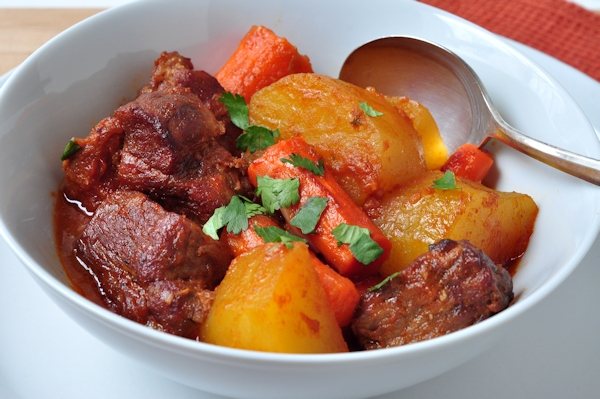
Prohibited Products
Some foods should not be consumed during the entire breastfeeding period. First of all, foods that cause an allergic reaction or digestive problems are excluded:
- fruits that do not grow nearby (citrus fruits and exotic fruits from other countries);
- carbonated and alcoholic drinks, including beer;
- fatty meat broths;
- mushrooms;
- pickled or salted preparations;
- canned food, products containing preservatives;
- fatty, fried meat, lard, smoked meats;
- sausage, frankfurters;
- chocolate, bakery products with a long shelf life;
- fast food;
- mayonnaise;
- hot seasonings, additives;
- margarine.
Partially permitted products
A nursing mother should know the list of foods that are partially permitted during breastfeeding:
- 2-3 months after birth, you can include raw green or yellow vegetables, herbs;
- high-quality brewed coffee is allowed 6 months after the introduction of complementary foods;
- seafood with caution after 6 months;
- egg whites are introduced after 4 months, monitoring the child’s reaction;
- Do not abuse sugar and salt;
- bakery products in small quantities;
- semolina porridge and pasta 1-2 times a week;
- add whole milk to porridge or tea, do not consume it in its pure form;
- introduce cabbage soup and borscht in vegetable broth after 3 months;
- freshly squeezed apple juice after 1 month.
By following the lists of permitted and prohibited foods, a nursing mother will maintain the baby’s health and be able to eat well.
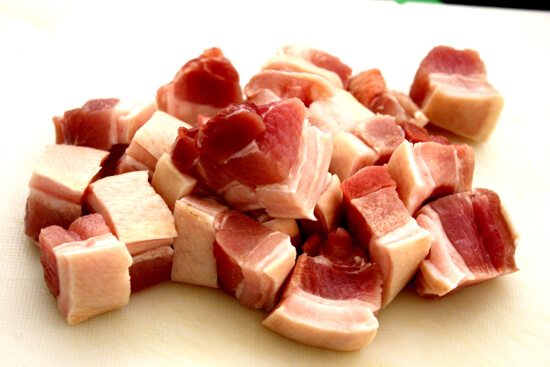
When can you introduce meat variety?
The optimal time to introduce pork and lamb into a nursing mother's daily diet is the day when her baby turns six months old and she starts giving him complementary foods. Naturally, not all mothers are able to maintain a six-month diet, especially since there are so many temptations around.
Moms begin bombarding pediatricians with questions about the possibility of introducing fatty meats into food as soon as the child is a month old. Doctors recommend waiting as long as possible with pork, since fatty meats are poorly digested by the mother’s gastrointestinal tract, and during the lactation period they can cause digestive problems in the baby. After your baby turns three months old, then you can try a piece of boiled pork or a steamed cutlet. This experiment should be carried out in the morning in order to monitor the child’s reaction throughout the day. If everything is fine with your tummy, your baby will be cheerful and playful, and your skin will be clean without rashes, then you can periodically eat pork, but under no circumstances should it be spicy, greasy or fried.
The benefits of pork
Pork is rich in protein, which is the basis for the construction of new cells and growth of the child. The composition contains B vitamins and choline. Thanks to these components, the level of cholesterol in the blood is reduced, immunity is increased, the functioning of the nervous system is normalized, metabolism is enhanced, the skin and mucous membranes are protected from the invasion of infection.
Pork contains vitamins A, D, E, essential amino acids and minerals: iron, potassium, phosphorus, magnesium, sodium. 100 g of pork contains 24 g of protein, 11 g of fat, and the calorie content of lean pork is 160 kcal.
Due to the content of vitamins and minerals, pork benefits the body:
- efficiency increases, vital energy increases;
- has a beneficial effect on the nervous system, helps relieve fatigue;
- has a positive effect on the activity of the circulatory system;
- allows you to replenish milk deficiency and enhance lactation in women during breastfeeding;
- helps strengthen bones;
- strengthens the immune system.
Useful properties and contraindications
After giving birth, the young mother’s body begins to experience a lack of vitamins and microelements: after all, during the entire 9 months of pregnancy she shared them with her baby.
However, every young mother who breastfeeds her child continues to transfer most of the nutrients to the growing body along with breast milk.
Therefore, during the period of breastfeeding, nutritious nutrition is very important, which can give strength to the mother’s exhausted body and provide the baby with the nutrients that he needs for proper development.
All prepared dishes must consist exclusively of healthy products.
And although there is an opinion that everything healthy is tasteless, it is fundamentally wrong. Even by following a certain diet, which is important for young mothers during breastfeeding, you can prepare not only healthy, but also delicious dishes that will surely please everyone in your household. One of them is goulash.
What is goulash
Goulash was first invented by shepherds; it was cooked over a fire in a large cauldron, where the meat was first fried and then stewed until tender along with vegetables.
Goulash is a thick soup originally from Hungary, where it is still served as a first course.
It was especially popular with shepherds, who cooked it in cauldrons over a fire.
In Russia, goulash was the signature dish of catering establishments and was classified as a second course served with a side dish. It was called a stew made from boneless meat, prepared in two steps:
- roasting meat;
- stewing in a small amount of water with the addition of tomato paste or fresh tomatoes.
Currently, the recipe for making goulash involves frying meat in lard, to which vegetables are added, and then flour. After this, tomatoes or sauce, as well as hot water, are added to the resulting mass. The result is a tasty and satisfying dish that goes well with any side dish - potatoes, pasta or rice.
Authentic Hungarian goulash
Calorie content of goulash
Goulash is a nutritious dish that gives strength and energy to the body. Therefore, it is widely popular in many regions.
- improve the condition of skin, hair and nails, increase overall tone thanks to vitamins A and E, B vitamins, which the product is rich in;
- ensure the normal functioning of the organs and systems of the body due to the supply of important microelements, including potassium, calcium, selenium, phosphorus, etc.;
- increase hemoglobin levels, which is important for postpartum anemia (the maximum iron is found in red turkey meat, which makes up the poultry thighs);
- increase the amount of plasma in the blood and normalize metabolism - this is helped by sodium, which is much higher in turkey compared to beef and veal;
- strengthen bone tissue, since calcium (there is a lot of it in this type of meat) is well absorbed due to the moderate fat content of the product;
- normalize sleep in chronic insomnia - turkey meat is rich in tryptophan, which has a hypnotic effect.
In conclusion, we will give some simple tips that will make your meals tasty and safe.
- Soak the cereals in water for a couple of hours.
- Before cooking, thoroughly wash meat, vegetables and cereals (rolled oats need to be washed too!)
- Meat dishes are best prepared from fresh meat.
- It is preferable to make minced meat yourself.
- If you defrost meat in the microwave, remove it from the bag.
- Do not use plastic utensils.
- Cook with passion and eat with gusto!
We suggest you read: What day is ovulation - 28 day cycle
Very often, a young mother has a headache about what to cook with such a large restriction in food while breastfeeding. By adopting our dishes, you will significantly expand the menu for a nursing mother! Our recipes for second courses can be included in the diet of a nursing mother from the first days after childbirth. All products are selected in such a way that your baby will not have a tummy ache from gas and colic!
We also recommend reading our article “Menu for nursing mothers: making soups.”
Turkey contains a large amount of folic acid, which is beneficial during breastfeeding. It promotes a speedy recovery after childbirth and improves the quality of milk, thereby supporting the normal growth and development of the baby. With mother's milk, the baby receives many valuable substances present in turkey meat, including calcium, which is necessary for proper bone formation.
Turkey meat also contains vitamins and minerals that strengthen bone tissue, have a positive effect on the nervous system, hematopoietic system, immunity and metabolic processes.
Eating turkey while breastfeeding is especially beneficial for postpartum anemia. In addition, the product is recommended for those nursing mothers who suffer from insomnia or notice a deterioration in the condition of their skin, hair and nails.
Turkey meat may be contraindicated in case of allergies to animal protein and diseases in which the amount of meat in the diet must be strictly limited (gout, kidney failure).
Harm from pork
Pork during breastfeeding can harm mother and baby. Why you should not eat this meat in large quantities:
- excessive consumption of fatty pork leads to obesity;
- lipids contained in meat lead to arthrosis and arthritis;
- may provoke the development of allergies;
- if meat is cooked incorrectly, there is a risk of helminth infection;
- there is an opinion that pork provokes cancer;
- eating fatty meat creates additional stress on the liver and gallbladder;
- Excessive consumption of meat leads to increased cholesterol levels.
Meat sold in stores may contain additives that can negatively affect the health of the mother and baby. It is especially harmful to eat fried pork.
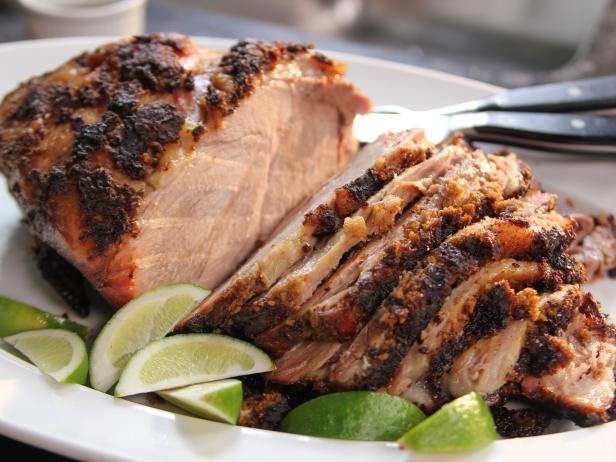
What meat to choose for cutlets
The safety of a dish depends on the type of meat from which it is made. Turkey and chicken are considered the most healthy and suitable. At the same time, turkey rarely provokes allergies. Poultry is suitable as a dietary food, a diet for people with digestive problems. Despite its low calorie content, poultry meat is very nutritious. This product can be introduced into a woman’s diet already in the first weeks of breastfeeding.

Chicken contains protein, vitamins B, K and E, potassium and iron, phosphorus and magnesium. If your baby is allergic to chicken, replace the product with turkey. This meat is considered hypoallergenic, so it is excellent for feeding nursing mothers and small children. Turkey contains iron and zinc, protein. It strengthens the immune system and energizes the body.
In addition, veal, rabbit and beef are suitable for making cutlets. This is a very healthy meat that is quite easily digestible and rarely causes an allergic reaction. They contain increased amounts of magnesium and potassium, phosphorus and iodine, and B vitamins. Such meat will help improve digestion and strengthen bones. For more information about what kind of meat you can eat during lactation, read the article “What kind of meat can breastfeeding women eat.”
It is better not to eat heavy types of meat during breastfeeding. They can cause serious poisoning and digestive disorders in infants. These types include lamb, pork, horse meat, venison, duck and goose. In addition, it is not recommended to consume processed foods. They contain a large number of preservatives, flavors and other chemical additives that are very harmful and dangerous.
Delicious recipe! Pele cake Belorechensky recipe
Choose fresh meat from a young animal, preferably without fat. Fish cutlets can be introduced into the diet in the third month of lactation. Prepare the minced meat for the cutlets yourself rather than buy it at the store. This product contains a large percentage of waste, including bones, cartilage, etc. In addition, the composition includes various chemical additives.
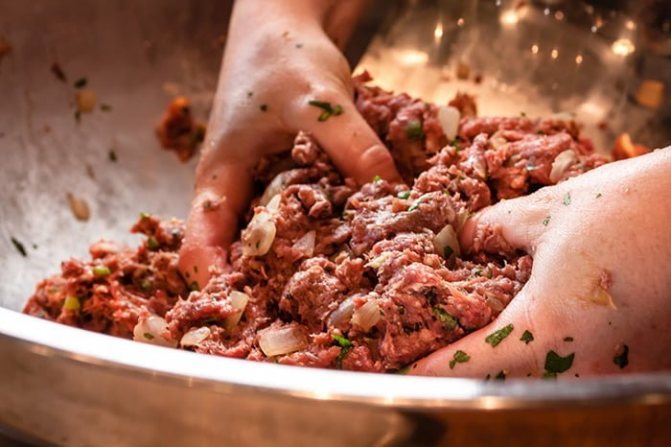
How to eat pork correctly
Pork is not contraindicated during breastfeeding, but the product has beneficial and harmful properties. A nursing mother needs to pay attention to the rules for preparing and eating meat in order to get the benefits of the product and reduce the harmful effects.
It is necessary to introduce meat into the diet of a nursing woman 3 months after childbirth. During this time, the child adapts to the mother's diet. The period of colic will end, and when a new product is introduced, the reaction or lack thereof will be more noticeable.
It is better to bake, stew, or boil meat. Fried meat should be completely avoided. You can add pork liver, it contains little fat.
You need to choose lean pork. Fat content should be less than 10%. It is desirable that the meat is chilled and pink in color. When pressed with a finger, the pulp should be restored.
Before adding meat, you need to cook the broth and taste it. If the child does not react, you can try the meat. At first, you should eat no more than 50 g. Gradually increase the amount to the norm of 150 g.
If a child has a reaction to a new product, it must be discontinued. Next time you can try to enter it no earlier than in a month. In the absence of allergies, pork should be on the menu 2 times a week.
You can cook a lot of things from pork while breastfeeding, the main thing is that the dish is healthy and low-calorie.

Can a nursing mother eat pork?
Every person knows that meat products must be present in the diet, since they are the source of essential substances for the body.
Today there is a wide choice of meat.
The most common is pork.
There is an opinion among many that this is the fattiest and most harmful meat. However, pork has slightly better qualities than other meat products. The main difference is that pig meat is more difficult to digest. At the same time, in terms of cholesterol, pork is inferior to butter, as well as chicken eggs. In fact, this product contains a huge amount of minerals, vitamins and other components, without which the body is simply not able to develop normally.
So, can a nursing mother eat pork and what should she pay attention to?
Can a nursing mother eat pork? or not?
Of course, pork should be present in the diet of a nursing mother. You can start eating it in the first 2-3 weeks after birth. The product is introduced into the mother’s diet like all new products. Do you prefer lean meat? and give up lard.
As for the cooking method, a nursing mother can boil or steam the meat. You should avoid fried meat, as the process of cooking it produces trans fats, which have a negative impact on health.
How to choose and cook pork?
If you choose the right meat, it will not pose a danger. First of all, buy pork only from stores and retail outlets where the product has undergone laboratory testing. For example, in a large supermarket you are unlikely to purchase low-quality goods.
Before consumption, pork must undergo good heat treatment. This will kill all pathogens and parasites. It’s better, of course, to bake or stew the pork. Meat cooked in a steamer can be dangerous.
Eat and be healthy!
Get a nutrition chart for a nursing mother right now to protect your baby from allergies, colic and abdominal pain.
Enter your email and click on the “GET” button
uroki4mam.ru
Salo and shish kebab
Shish kebab is a favorite pork dish, traditionally prepared in spring and summer. Should mom refuse it or can she eat a piece?
It is not advisable to consume pork shish kebab while breastfeeding. Fats and carcinogens contained in charcoal-grilled meat will negatively affect a child’s digestion, especially in the first 3 months of his life. Sauces and marinades served with the dish can cause poisoning.
Excess fat and high calorie content provoke constipation and intestinal colic in a child. Marinades made from mayonnaise, onions, and garlic, in which meat is soaked, are contraindicated during breastfeeding.
Overcooked meat will cause abdominal pain in a child, while undercooked meat will cause indigestion or the occurrence of infectious diseases.
If mom chooses the right marinade and cooks the dish well, then sometimes you can allow a couple of pieces of pork. It is best to eat shish kebab with stewed vegetables. Use kefir or mineral water as a marinade, a small amount of salt and herbs is acceptable. During the cooking process, you need to monitor the readiness; it is best to cut the meat into small pieces and bake on a wire rack.
It is better for a woman who is breastfeeding to avoid lard. Excess fat will not benefit the baby or mother. But if mom really wants salted lard, then after 6 months you can eat a small piece. Smoked lard is strictly prohibited.
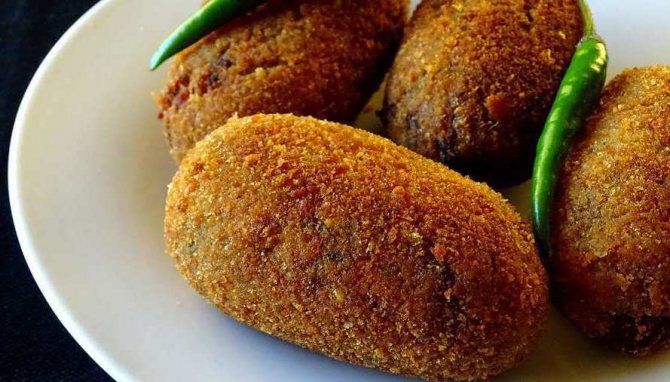
Fat in the diet of a breastfeeding woman
Pork, like lard, is not always recommended to be included in the diet when feeding a newborn. Much depends on the quality of the product. When wondering whether a nursing mother can eat pork and lard while breastfeeding, it is necessary to take into account the beneficial substances of the product.
Benefit
Despite its high calorie content, lard is recognized as a healthy product. The fat contains omega-6. Lard also contains lecithin. Both substances have many beneficial properties. When they are used, the following occurs:
- strengthening bones and improving muscle condition;
- active construction of cell membranes;
- normalization of blood circulation for the proper functioning of the cardiovascular system;
- beneficial effect on the brain;
- elimination of inflammatory processes;
- improvement of skin condition;
- removal of harmful cholesterol;
- normalization of proper functioning of the kidneys, liver, gastrointestinal tract;
- improves mood, thereby preventing depression.
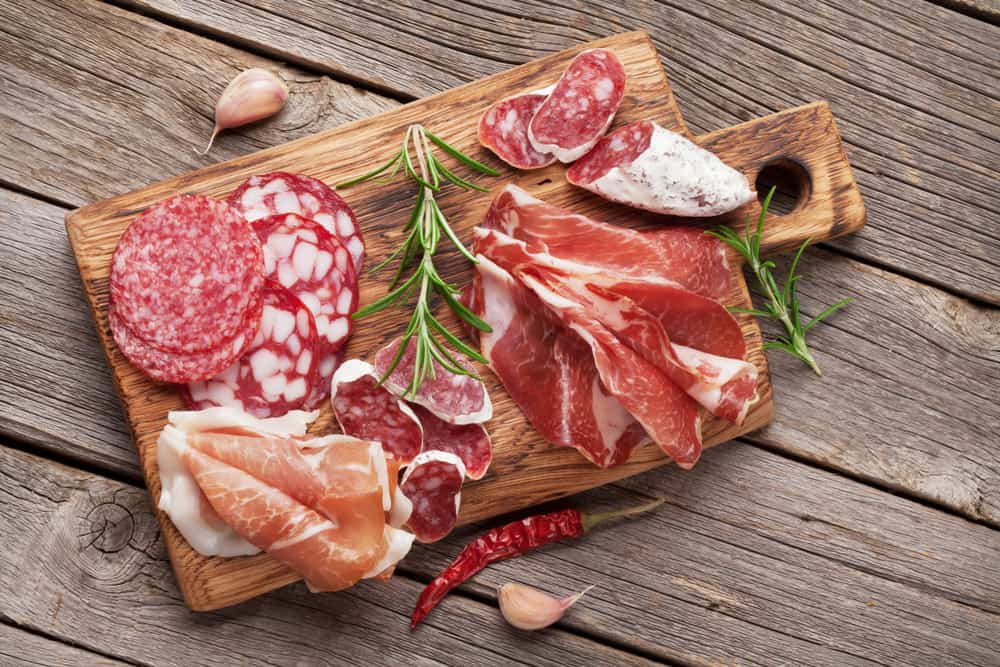
These benefits of lard are important for those who are interested in proper nutrition during lactation.
A 100 gram piece contains about 70-100 mg of cholesterol, 90 mg of fat, 39 mg of unsaturated fatty acids. Calorie content is 770 kcal. Professional nutritionists recommend adding the product in moderation, just like meat.
Rules of use
Breastfeeding women are wondering if they can eat pork and lard while breastfeeding? It is allowed, but the following recommendations from pediatricians must be taken into account:
- Pork is introduced from the age of 3 months, lard - from six months.
- Allergy testing is recommended. To do this, eat 10-15 grams of lard or meat, after which they carefully monitor the child’s condition. If there is the slightest negative reaction, the product is abandoned for several months. If the test was successful, you can eat a small piece of lard or meat every couple of days. Such caution is important, because newborns react differently to pork and lard dishes.
- A young mother should eat high-quality and properly prepared food. For example, lard should be eaten at home. Spices and smoking are extremely undesirable.
- You need to choose less fatty foods.
When planning to introduce lard or meat into the diet of a nursing mother, you can get a positive answer from a professional nutritionist. The most important thing is to choose the right products.
Recipes for breastfeeding
You can eat pork in limited quantities while breastfeeding. Recipes for cooking can be different:
- Stewed pork with vegetables. Place pork without fat in a slow cooker or stewpan and add a little water; after the meat is stewed until half cooked, add zucchini, cauliflower, carrots, potatoes and salt. It is necessary to simmer over low heat until cooked.
- Pork cutlets. When breastfeeding, it is necessary to carefully remove fat from the meat and grind it in a meat grinder. It is not advisable to buy ready-made minced meat. You can add raw grated potatoes to the cutlets. This way the dish will become less fatty.
- Potato soup. Lean pork is boiled and cut into pieces. Coarsely chopped potatoes, carrots and onions are added to the broth. Cook until done.
Recipes for steamed cutlets for nursing
Chicken
- Minced chicken – 0.5 kg;
- Egg – 1 piece;
- Hard cheese – 100 grams;
- Flour – 2 tablespoons;
- Sour cream – 2 tablespoons.
Beat the egg and, together with sour cream, add to the minced meat, mix. Grate the cheese and add to the mixture along with the flour, mix thoroughly. You can add chopped onion or garlic and lightly salt. Form small cutlets from the resulting mixture and steam for twenty minutes. You can easily replace chicken with turkey. Chicken cutlets are soft and tender. Turkey cutlets are more dietary and airy. The dish is suitable for frequent consumption.
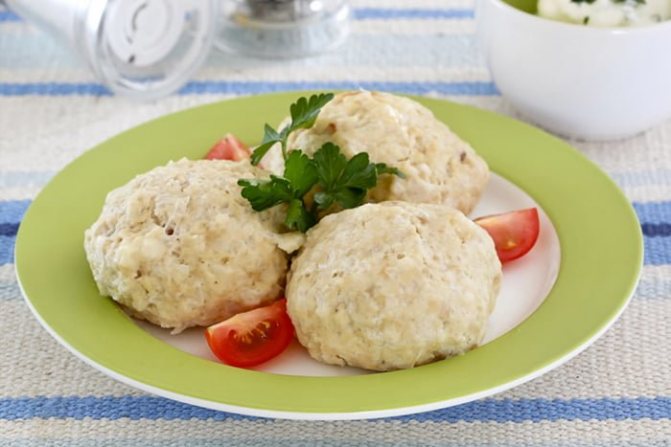
Classic recipe for nursing
- Minced veal – 0.5 kg;
- Minced beef – 0.5 kg;
- Carrots - 2 medium fruits;
- Onion – 1 head;
- Eggs – 2 pieces;
- Flour – 2 tablespoons;
- Salt and pepper to taste.
Peel and chop the vegetables on a grater or in a meat grinder. Beat the egg and add to the minced meat along with carrots and onions. Stir, add flour, lightly salt and pepper, stir again and beat. Form cutlets from the resulting mixture and fry a little in a frying pan on each side until golden brown. Then simmer for ten minutes. This recipe is great for nursing mothers after the third month of breastfeeding.
From veal
- Minced veal – 0.5 kg;
- Potatoes – 1 tuber;
- Chicken egg – 1 piece;
- Onion – 1 piece;
- Semolina – 2 tablespoons.
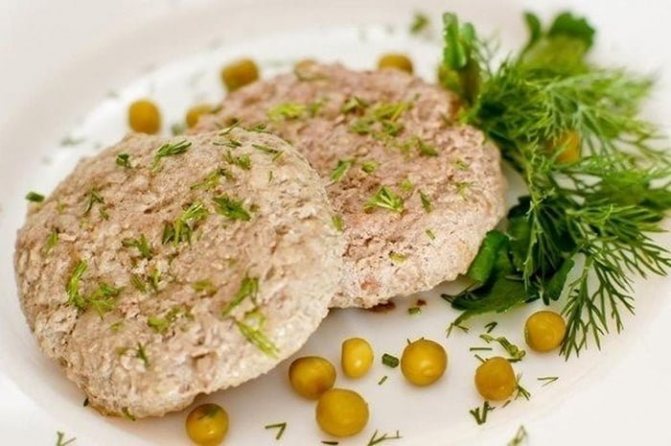
Peel, cut and grate vegetables or grind in a meat grinder. Beat the egg, along with the potatoes and onions, add to the minced meat. Stir, add semolina and mix again. Beat the resulting mass well, form into cutlets and steam for half an hour. The dish turns out very light and tender, goes well with fresh vegetables, rice or buckwheat porridge.
Fish cutlets
- Fish fillet – 0.5 kg;
- Egg – 1 piece;
- Milk – 100 ml;
- Flour – 1 tablespoon;
- Onion – 1 head;
- White bread - 2 slices;
- Salt to taste.
Soak the bread in milk. Peel and cut the onion and pass through a meat grinder along with the fillet. Beat the egg and add to the minced meat, add the bread, lightly salt and mix thoroughly. Form into cutlets and steam for twenty minutes. To diversify the recipe, you can put greens or a piece of cheese inside each piece. This dish is suitable for a nursing mother in the third or fourth month of lactation. And what kind of fish you can eat while breastfeeding, see the link.
Subscribe to our VKontakte group
